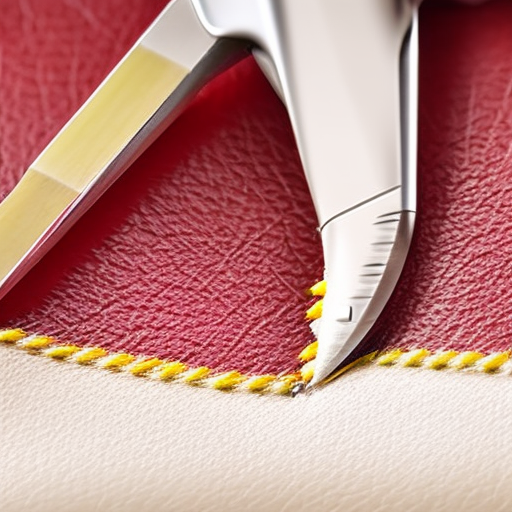Choosing the Right Needle and Thread
When working with leather, it is crucial to choose the appropriate needle and thread to ensure a sturdy and durable outcome. Opt for thicker, heavier-duty needles like a leather needle or a heavyweight needle. For sewing/” title=”Stitching Stories: A Beginner's Guide to Sewing”>threads, go for strong ones such as nylon or polyester. Avoid using lightweight cotton threads as they may not withstand the firmness of the leather.

Prepping the Leather
Before sewing leather, it is essential to prepare it properly. Make sure the leather is clean and free of any dust or dirt. Use a soft brush or a slightly damp cloth to carefully clean the leather surface. Additionally, consider using leather conditioner or saddle soap to moisturize and soften the leather. This will prevent cracking and make it easier to work with.

Using the Right Stitching Technique
When stitching leather, it is best to use techniques that will give your project both strength and a polished appearance. The saddle stitch is a popular choice for sewing leather as it creates a sturdy, interlocking stitch. Ensure the tension is even throughout the stitching process for a professional finish. Practice on scrap leather to perfect your stitching before working on your main project.

Clamping or Gluing Pieces Together
When sewing leather projects, some parts may require additional stability. To keep the fabric aligned and secure, consider using clamps or clips. Secure the pieces together firmly without damaging the leather’s surface. Alternatively, you can use leather glue to temporarily adhere the parts before stitching. This will give you more control and prevent any shifting while sewing.

Finishing Touches
After completing the sewing process, give your leather project some final touches. Trim any excess thread and carefully inspect the stitches for any loose ends. To achieve a professional look, consider using edge finishers or edge paint to seal and protect the raw edges. Additionally, use a leather conditioner or wax to maintain the leather’s quality and keep it looking vibrant for years to come.





